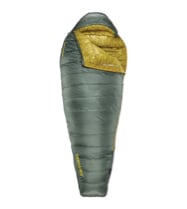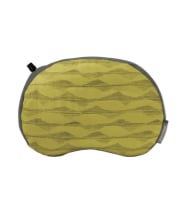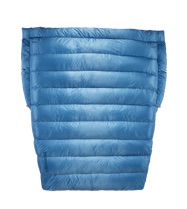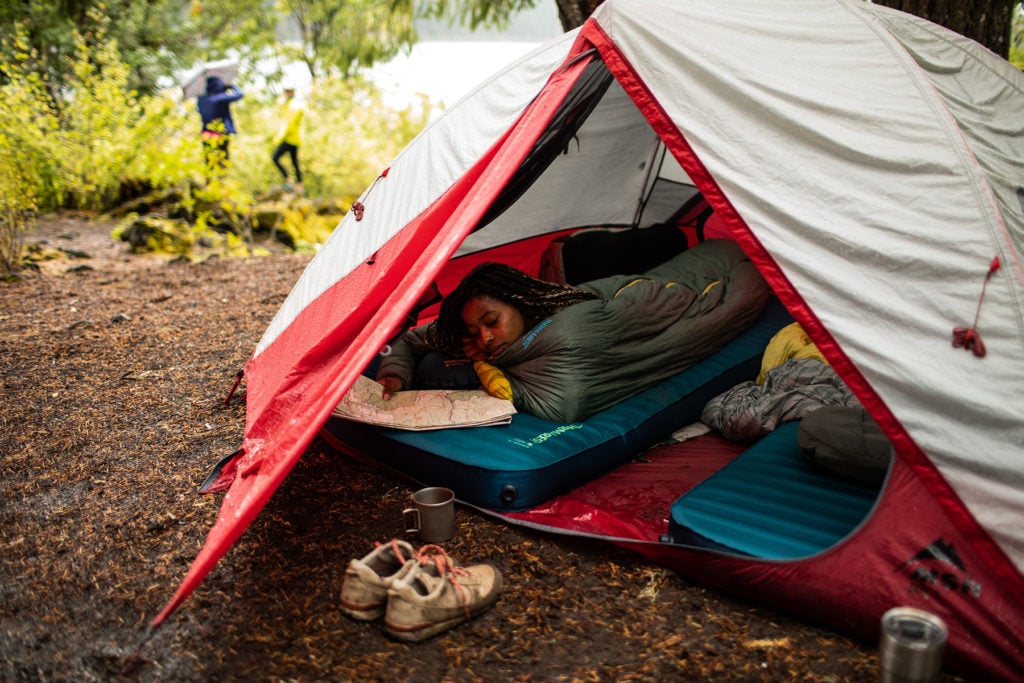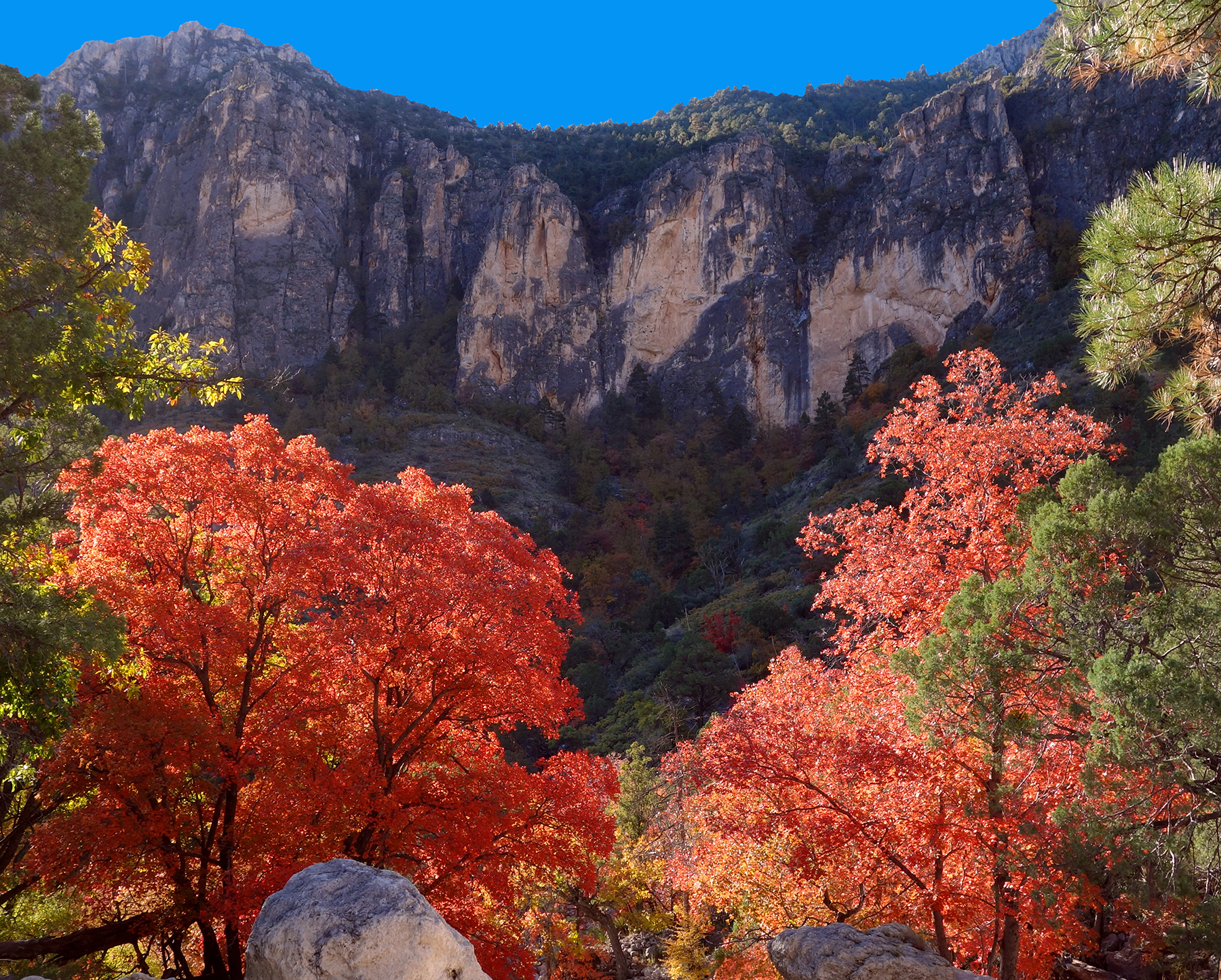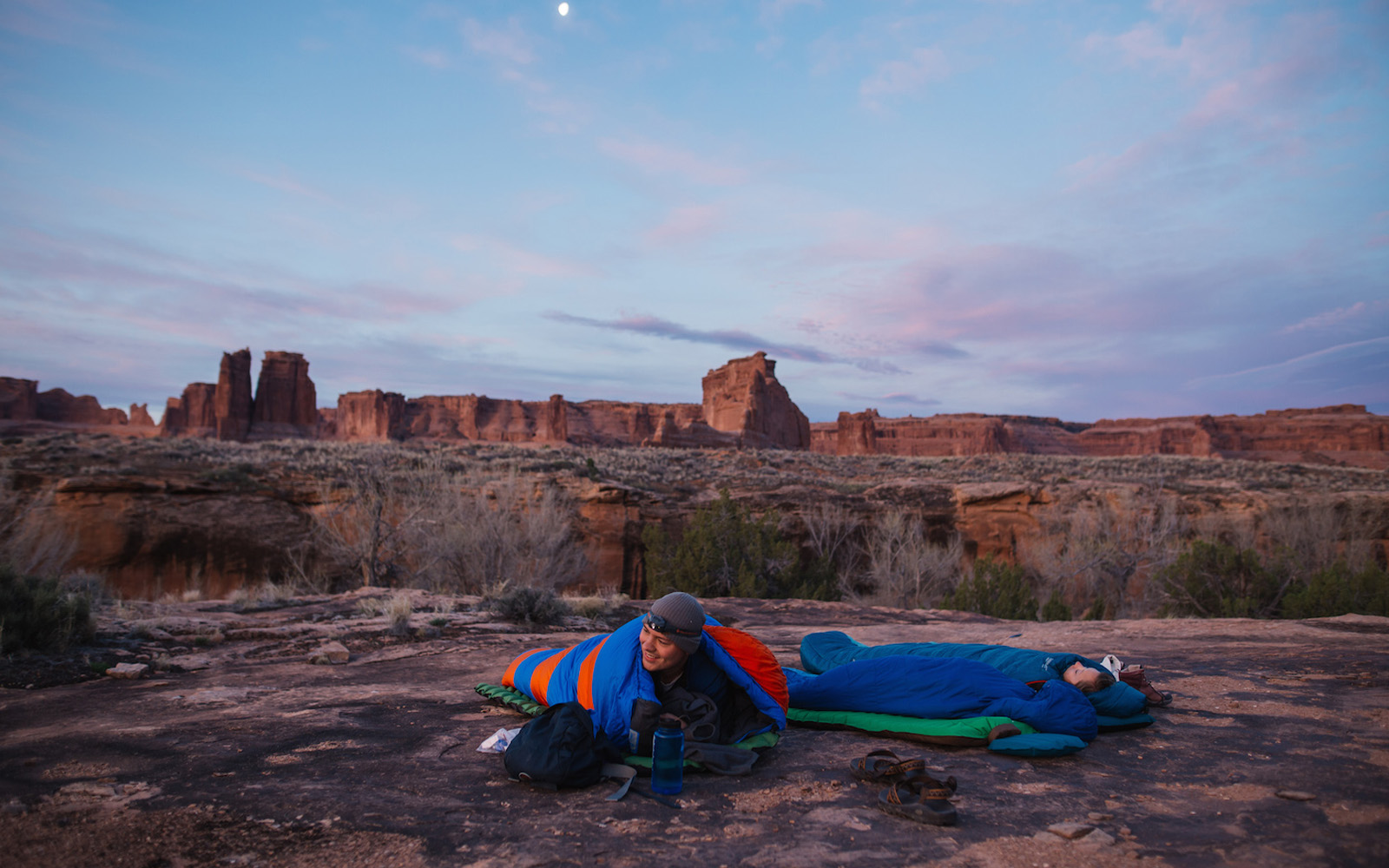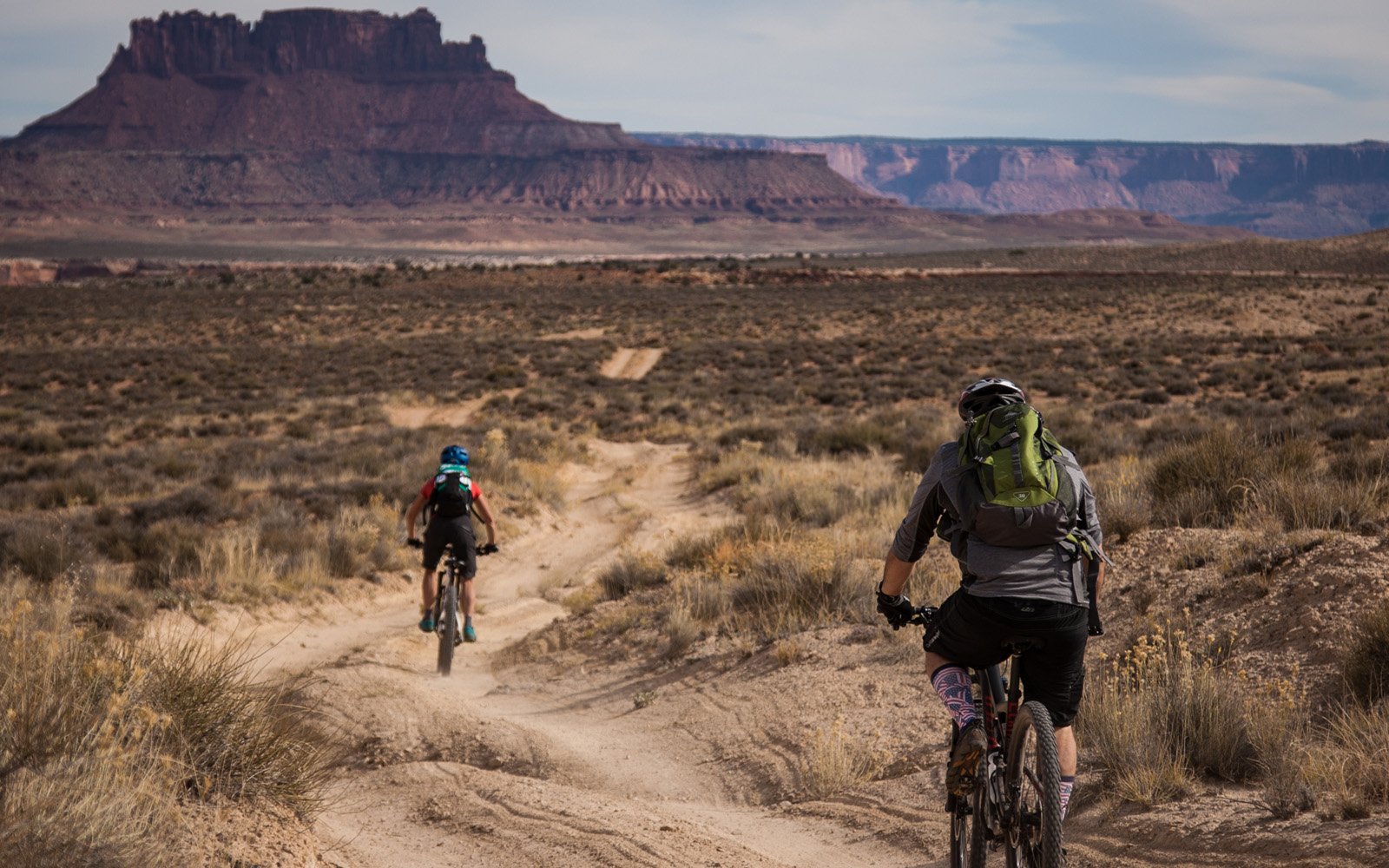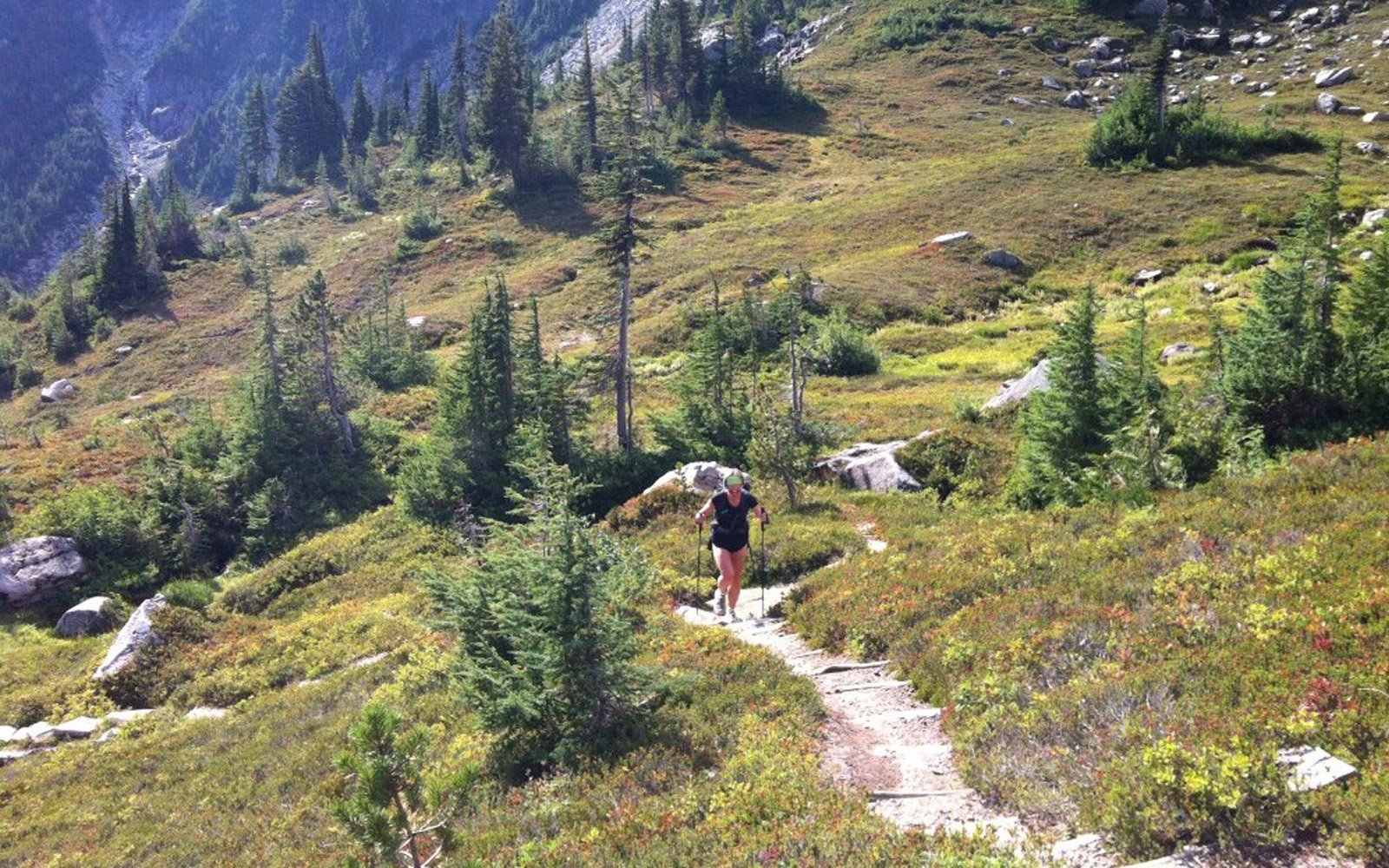Fall is the time to hit up Southern Utah. Temperatures are cooling off, the sun is out and abundant desert magic is everywhere you look. Utah fall camping is some of the best camping in North America. From exclusive sites at America’s most beautiful national parks to off-the-grid adventures deep on BLM land, there’s a perfect place to pitch your tent this fall.
The Different Types of Camping in Southern Utah
In Southern Utah you’ll find all sorts of campgrounds. From privately owned pull-in sites with showers and RV hookups to deserted dispersed camping in the desert, there’s a huge variety of options.
Some camping (such as private campgrounds, some national park camping destinations, and backpacking in parks) requires permits or advance reservations. However, most of the camping in Southern Utah is on a first-come-first-served basis. Do your homework before you head out to avoid any disappointment.
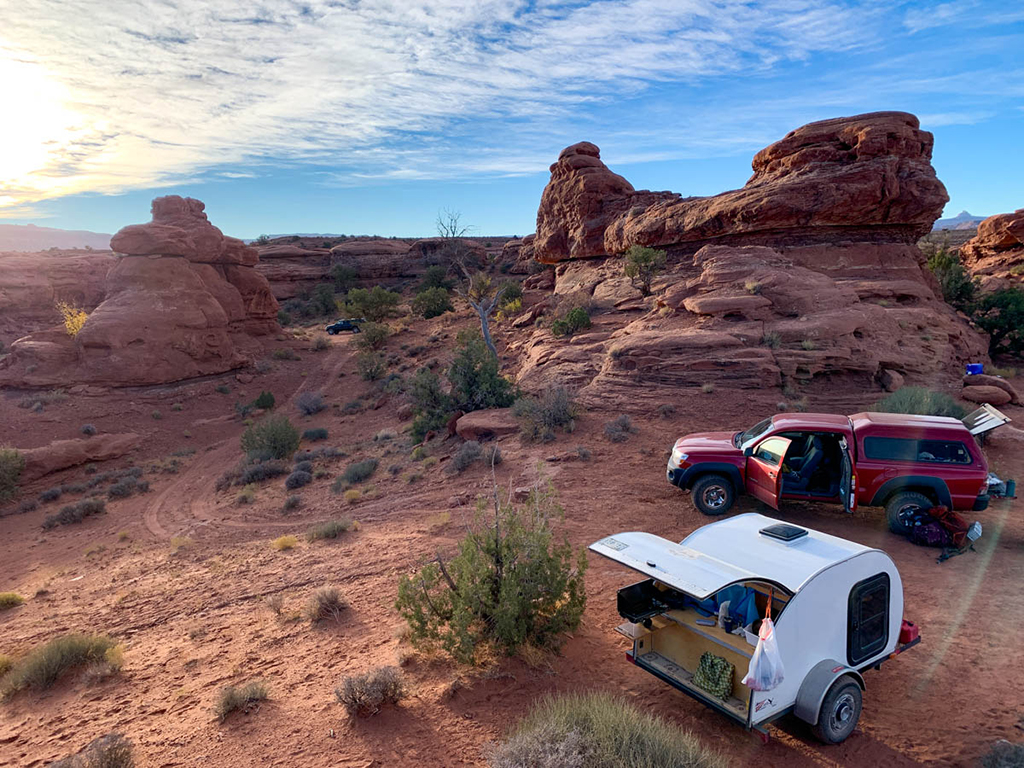 Photo by Meg Atteberry of Fox in the Forest @adventuresoffoxintheforest
Photo by Meg Atteberry of Fox in the Forest @adventuresoffoxintheforestWhen is the Best Time to Go Fall Camping in Southern Utah?
The fall desert season runs from mid-September through mid-December. However, the best time for Southern Utah fall camping is hands-down the month of October. Temperatures are still quite warm during the day (the mid-70s feels very hot in the sun), and overnight lows are still mild. There isn’t a threat of rain or snow to limit activities like climbing, canyoneering, mountain biking, canyon hiking and off-road driving. Bear in mind though, it is the peak season for desert adventures. Depending on where you go, you could encounter crowds.
November can also be quite pleasant if you don’t mind being a little cold. Be warned, by late November and December the threat of winter storms rolls in. While it’s still often unbearably hot in September. The beauty of Southern Utah fall camping is that it kind of extends the summer season while other regions are experiencing an onset of cold. Still, it is a good idea to prepare for variable fall conditions with the gear you bring.
4 Amazing Fall Camping Spots in Southern Utah
Southern Utah offers an exquisite variety of landscapes to camp in. These unique camping areas all boast amazing scenery and plenty of unique activities nearby.
1. Moab’s BLM Campgrounds
With over 24 campgrounds surrounding the town of Moab, there are plenty of first-come-first-served campgrounds to choose from. For those that are wanting to explore this amazing region’s best offerings, Moab is the place to put up a basecamp. You can climb iconic towers, visit two national parks (Canyonlands and Arches), enjoy world-class biking and 4×4 roads, whitewater rafting, and much more. There is a lot to see and do in Moab. Don’t forget to visit Dead Horse Point State Park for a sunset overlooking the iconic Colorado River.
Each campground varies in terms of what type of vehicles they can accommodate, so be sure to double check if you’re traveling with a larger group, RV or trailer. Each site is $20 per night and includes a fire ring, public vault toilets, picnic table, tent and parking area. Note that no sites have water so bring your own.
 Photo by Meg Atteberry of Fox in the Forest @adventuresoffoxintheforest
Photo by Meg Atteberry of Fox in the Forest @adventuresoffoxintheforest2. Backpack in the Needles District of Canyonlands National Park
For a real adventure and a true sense of isolation, head to the Needles District of Canyonlands National Park. Located two hours south of Moab, this stunning district features tall canyons with unique rock formations that pierce the sky.
The best way to enjoy the Needles District is to snag a permit for one of the many backcountry camping sites. Elephant Canyon and Chesler Park are the most popular. Many backcountry sites feature unbeatable views of these magnificent red rock giants.
Be aware that you’ll need to pack in all of your water (plan on a gallon per day per person) and use human waste disposal bags. Some areas even require hard-sided bear cans. Permits are $15 per trip and reservations are available online up to 4 months in advance.
3. Dispersed Camping Near Escalante
For an off-the-grid fall camping in Southern Utah, there is no place quite like Escalante. Avid canyoneers, canyon hikers, and those who want to really get away from it all should check out the dispersed camping options near Escalante.
Part of the beauty of dispersed camping is uncovering your own backcountry site. To do this, simply use Google Earth and look at a trailhead you’d like to visit, backtrack with satellite view on to the nearest big road and see if you can spot tiny fire rings along the way. Cross-reference this with a BLM map of areas that allow camping to find previously established campsites. Voila! Now you’ve got your own slice of dispersed camping paradise.
Keep in mind, many of the areas in Escalante require a high-clearance, 4×4 vehicle to reach. You’ll also be responsible for everything – water, food, responsible toilet (it is recommended to pack out all human waste), trash, and off-the-grid navigation. Stop by the Escalante Visitor’s Center in the town of Escalante to check in and get your free permit to go dispersed camping.
 Photo by Meg Atteberry of Fox in the Forest @adventuresoffoxintheforest
Photo by Meg Atteberry of Fox in the Forest @adventuresoffoxintheforest4. Beautiful Bryce Canyon Campgrounds
It is never a bad idea to organize a fall camping trip to Bryce Canyon National Park. The Sunset Campground at Bryce Canyon has 100 sites available for reservation ($20 per night for tent sites, $30 for RVs, no hookups). You’ll get up-close and personal with this magnificent cirque of hoodoos while camping in the park.
Be sure to check out Sunset and Sunrise Point, hike the Navajo Loop, and enjoy one of the many ranger programs in the park.
With potable water, vault toilets, picnic tables, and easy access to the bus, this is the best campground in Bryce Canyon. Remember, Bryce Canyon sits at 8,000 feet above sea level. Pack a few warm layers and drink plenty of water to get acclimated.
Quick Tips for LNT Camping in the Desert
Despite the hardy and seemingly hostile ambiance, deserts are fragile environments. Camping in the desert requires a bit of special attention. Leave the desert better than you found it so people can come enjoy the best fall camping in Southern Utah year after year. Here are a few tips for Leave No Trace while camping in the desert:
- Use toilets. Human waste (or any waste) does not break down in the desert. Use provided toilets or a human waste disposal bag instead of digging a hole. If you do go in the wild, be sure to dig a cat hole and pack out all of your toilet paper (animals dig it up).
- Bring plenty of water. Water is a precious resource in the desert. Pack in all of your water (a gallon per person per day) since natural water sources should be left for plants and wildlife.
- Stay on marked trails. “Don’t bust the crust” is a popular desert phrase. The raised up, black, lumpy soil is actually a living organism called cryptobiotic soil. This bacteria works hard to keep erosion at bay. Avoid it by staying on marked trails.
- Don’t harvest firewood. It’s actually illegal throughout Utah to harvest desert firewood. Many trees that look dead are actually alive. Instead, pack in your own firewood.
- Only camp in previously established sites. Fire rings, tire marks, and human activity permanently scar the desert. Only use previously established campsites and camp in designated areas only.
- Put your trash in your vehicle at night and hang your food. Although you might not encounter large animals, the small critters love to tear up trash so store your food just as you would in bear territory.
With this list of some of the best Utah fall camping, you can spend a lifetime exploring this magical landscape. From magnificent sandstone arches to deep canyon systems there is a world of adventures to uncover in Southern Utah.


